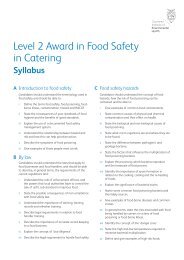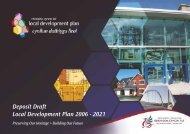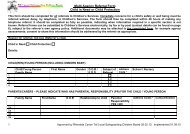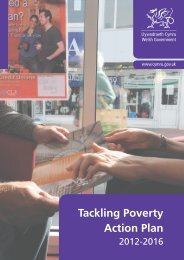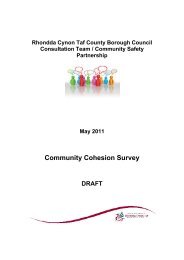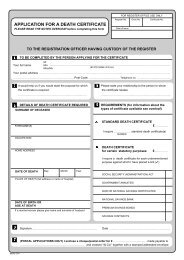Delivering design and Placemaking - Rhondda Cynon Taf
Delivering design and Placemaking - Rhondda Cynon Taf
Delivering design and Placemaking - Rhondda Cynon Taf
- No tags were found...
Create successful ePaper yourself
Turn your PDF publications into a flip-book with our unique Google optimized e-Paper software.
Supplementary Planning GuidanceParking Guidelines for Disabled PeopleIt is recommended that appropriately positioned parking places, preferably within50 metres of the facility served by the car park <strong>and</strong> which are adequate in size <strong>and</strong>number, shall be provided for people with disabilities. The size of each parking place<strong>and</strong> level of provision should be in accord with the recommendations in theDepartment for Transport's document ‘Inclusive Mobility’, ‘A Guide to Best Practiceon Access to Pedestrian <strong>and</strong> Transport Infrastructure’ (2002).The recommended proportions of spaces for Blue Badge holders are:-• For car parks associated with existing employment premises;2% of the total car park capacity, with a minimum of one space.• For car parks associated with new employment premises;5% of the total car park capacity.• For car parks associated with shopping areas, leisure or recreational facilities<strong>and</strong> places open to the general public;Disabled persons parking bays in off-street locations should be marked out withyellow lines <strong>and</strong> a yellow wheelchair symbol within the parking space. A sign, or ifappropriate signs should be provided at the entrance to the car park to direct disabledmotorists to <strong>design</strong>ated parking spaces which, if the car park is not under cover,should also have raised signs at the head of the reserved bays. Signs inside the carpark should show the most convenient way to the facilities served by the car park,with an approximate distance to those facilities. The marking out should comply withBritish St<strong>and</strong>ard BS8300: 2001 ‘Design of buildings <strong>and</strong> their approaches to meet theneeds of disabled people – Code of Practice’ as well as to the recommendations ofthe Department for Transport's document ‘Inclusive Mobility’, ‘A Guide to BestPractice on Access to Pedestrian <strong>and</strong> Transport Infrastructure’ (2002).On street disabled parking bays should be indicated by signs <strong>and</strong> marked out in fullcompliance with the Traffic Signs Regulations <strong>and</strong> General Directions (1994). Eachbay should have a raised sign at the head of the bay to ensure that if snow or fallenleaves obscure the road markings, the purpose of the bay is still apparent.A minimum of one space for each employee who is a disabled motorist plus6% of the total car park capacity for visiting disabled motorists.• For car parks associated with railway stations;A minimum of one space for each railway employee who is a disabledmotorist plus:• for a car park with fewer than 20 spaces, one disabled space• for a car park of 20 to 60 spaces, two disabled spaces• for a car park of 61 to 200 spaces, three disabled spaces• for a car park with more than 200 spaces, 4% of capacity plus fourdisabled spaces.36 • Local Development Plan 2006 - 2021







